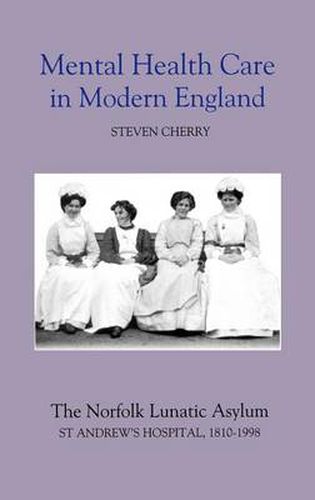Readings Newsletter
Become a Readings Member to make your shopping experience even easier.
Sign in or sign up for free!
You’re not far away from qualifying for FREE standard shipping within Australia
You’ve qualified for FREE standard shipping within Australia
The cart is loading…






The Norfolk Lunatic Asylum opened in 1814 as a pioneer county pauper institution and in 1998 St Andrew’s featured among the last of the large psychiatric hospital closures. This history of one particular place for madness coverschanging approaches to insanity and treatments over two centuries. It draws extensively upon archival sources to examine the use of buildings and environments; the regimes of long-serving masters, superintendents and medical superintendents; the patients’ own experiences; and the rationales, including cultural and gender issues, which informed therapies, relationships and hospital life.
However, the contexts of national policies and economic constraints, professional and therapeutic developments, local economy and society, and current research findings are also acknowledged. Chapters dealing with the asylum’s transformation as the 1915-19 Norfolk War Hospital and 1940-47 Emergency Hospital have disturbing revelations concerning wartime mental health care: similarly with the loss of local accountability and the experience of resource control under the National Health Service. Interviews with former staff and current personnel recall first-hand experiences of hospital life since the 1920s, the privations of wartime and the early NHS, hopes for new medications and conflicting views surrounding the closure of St Andrew’s and thedelivery of community mental health care.
STEVEN CHERRY is senior lecturer in history, Wellcome Unit for the History of Medicine, University of East Anglia.
$9.00 standard shipping within Australia
FREE standard shipping within Australia for orders over $100.00
Express & International shipping calculated at checkout
The Norfolk Lunatic Asylum opened in 1814 as a pioneer county pauper institution and in 1998 St Andrew’s featured among the last of the large psychiatric hospital closures. This history of one particular place for madness coverschanging approaches to insanity and treatments over two centuries. It draws extensively upon archival sources to examine the use of buildings and environments; the regimes of long-serving masters, superintendents and medical superintendents; the patients’ own experiences; and the rationales, including cultural and gender issues, which informed therapies, relationships and hospital life.
However, the contexts of national policies and economic constraints, professional and therapeutic developments, local economy and society, and current research findings are also acknowledged. Chapters dealing with the asylum’s transformation as the 1915-19 Norfolk War Hospital and 1940-47 Emergency Hospital have disturbing revelations concerning wartime mental health care: similarly with the loss of local accountability and the experience of resource control under the National Health Service. Interviews with former staff and current personnel recall first-hand experiences of hospital life since the 1920s, the privations of wartime and the early NHS, hopes for new medications and conflicting views surrounding the closure of St Andrew’s and thedelivery of community mental health care.
STEVEN CHERRY is senior lecturer in history, Wellcome Unit for the History of Medicine, University of East Anglia.